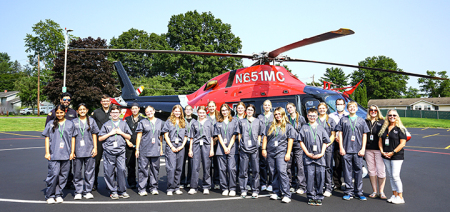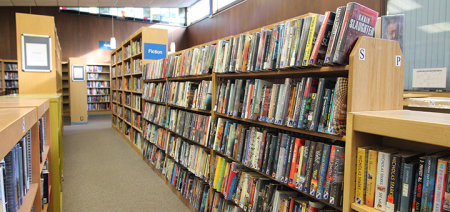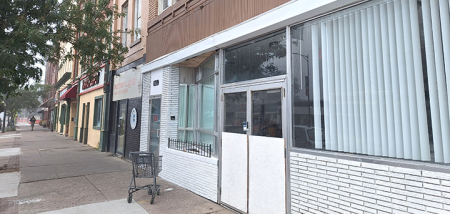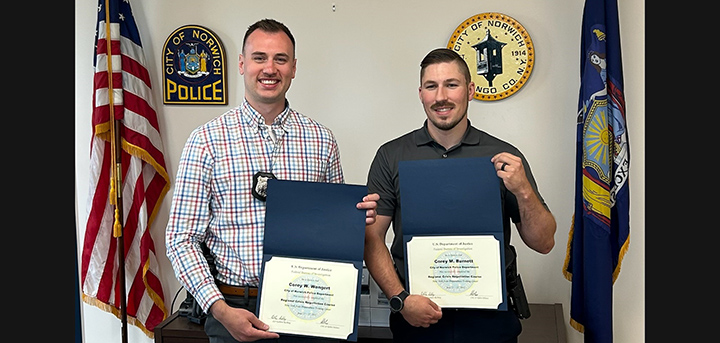Come To Italy With Me: Part III – School, Italian Style
Published:
November 17th, 2010
By:
Mary Musson
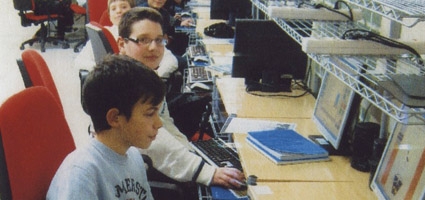
My husband, who has recently retired from public education where he worked in finance, is eager to go on this interview with me since we are touring one of Molfetta’s high schools today. We approach the building on a bright and sunny weekday morning and are met at the door by the building principal, who is called “Signore Preside.” As we walk down the spotless hall to his small office, I am impressed by the 18th century Mediterranean architecture. We are walking on tiled floors, under massive tall ceilings and surrounded by walls the color of a warm Italian sun. A large courtyard full of palm trees and tropical flowers centers the building and brings in even more light. The place is very quiet. Hard to believe school is in session, and then I notice the massive wood doors that contain each classroom’s sound output.
We settle into his meticulous, clutter free office and he speaks to us from behind his desk which has a few papers on it and a laptop computer. As we take in the atmosphere, I am temporarily distracted by the gloriously colored Italian flag behind him framed by the yellow walls which provide a perfect mat for the green, white and red cloth. Its color seems jarring in the otherwise austere space. My husband is equally distracted by the other important Italian symbol on the office wall: a crucifix.
This building we are visiting today houses the high school for the classics. Here students study Italian, English, Latin, Greek, History, Geography, Philosophy, Math and Physics. Across town, a more modern building houses the science high school where students study the same core subjects but add Physics, Biology, Chemistry and Design to the mix. The Preside tells us he is principal of both schools with a total enrollment of close to 1,000. As we start our questioning, we soon discover that he is totally autonomous in his position, since he does not answer to a Superintendent of Schools or a Board of Education. This lack of local input to the school system is the main difference in how his school differs from our American system. It all boils down to money – who pays for what.
In our system school funding is divided into a formula which in our home state of New York, on average gets 10% from the federal government, 40% from the state and 50% from the local community which is gathered from yearly property taxes. This gives the community a voice in its schools which is often heard loudly around the time of the yearly budget vote. In Italy, all the money comes from Rome, and it is used solely for education as it applies to the physical plant, staff salaries and supplies. Schools do not provide meals or sports and at the high school level, students who are not within walking distance use public transportation. Some busing is provided for younger students using a formula based on family income. High school is in session six days per week, five hours per day and lasts five years.
When he offers us a chance to see education in process we are delighted to be escorted into a philosophy class. As we enter the room the students and the teacher jump to their feet and greet him with, “Good morning, Mr. Preside.” This respect is evident throughout the building as he later escorts us to science labs and physical education facilities (a small gym and outdoor courts). Everything is so clean (including the student bathrooms) that I comment on it. No custodians he tells me, we hire a community based cleaning service. Of particular interest to Mr. Preside is a museum he has established filled with ancient teaching instruments. “They were in dusty boxes until we exposed them once again to the light and they still work, ” he says with a smile.
He has a great deal to smile about. I don’t need to see test scores and statistics to see what’s going on here. This 200-year-old building has served education well through the years. The facility is clean and orderly. The staff seems competent and at ease. The Preside is treated with visible respect. But above all, the students seem happy to be here. Maybe it’s because they feel cared for. I saw it when I asked a group of students in a philosophy class if I could take their picture, “Certainly,” said the teacher as she gathered her group of 16 students around her and held them in a tender hug. As I get ready to snap the shot, I stop for a split second and I feel what Mr. Preside encourages in his sun-colored school – love. Love for each other, love for surroundings, love of learning. On this fertile ground education can thrive.
A few days later I am granted another school tour and this one is done from the teacher’s perspective. My cousin Tonio takes me on a tour of the middle school where he teaches Technology. He is close to retirement now. Teachers must teach 40 years to receive full benefits and he is in his 39th year of teaching and he tells me how much he will miss this place. His wife Vianna teaches languages in the same building and daughter Michela just finished her Masters in Education and is starting out her career as a remedial teacher. “It’s the family business,” he tells me. “We have been very happy teaching here.”
Happy and grateful. Teaching jobs are hard to come by in southern Italy. There is no local hiring. It’s all done through Rome and the process is long, laborious and based on many proficiency exams. Most people leave Molfetta and go north for a few years, as Tonio and his wife did, till jobs opened up in their home town. The wait is longer now with enrollments dropping (Italy has the lowest birth rate of developed countries in the west) and large numbers of college graduates waiting for openings. “We don’t take our jobs for granted,” he tells me.
Because of his busy schedule, this tour takes place after hours on a week night. Driving to the school he tells me interesting facts about Italian schools such as the use of sick days by staff. If a teacher calls in sick, a doctor comes to the house. After a physical exam the patient is issued an appropriate time to recover and is then issued a return to work order. I tell him that would never work in our American system and I smile to myself thinking how that concept would be treated at a union meeting.
As we enter the parking lot of the school, there are a few lights on and through the building’s window I can see a meeting of adults taking place in what Tonio tells me is his Preside’s office. As we enter the building there are more people milling around the school office where he goes to get keys so he can show me his pride and joy – the computer lab where he teaches. I ask him why so many people are here after school hours and he shows me as we detour down a hall and hear the exuberant sound coming from the gym where a hot and heavy girl’s volleyball game is in full swing. Tonight the school is hosting a local league.
As I mentioned before, schools do not provide sports. Parents pay for their children’s activities which come to life around four in the afternoon as kids dash off to the likes of music and dance lessons, soccer practice in the many outdoor fields maintained by the community, as well as swimming in the town’s indoor pool. An impressive new commercial gym offers weight training and is always full. Martial arts are also popular here and there are many private schools for this type of instruction. So young people get what they need and if their parents can’t afford the extras there many sponsors, both businesses and private citizens, who make it happen.
As Tonio and I make our way to the basement he shows me the newly painted classrooms and the large, refurbished meeting room (“Parents come here at least once a month to speak with us” he tells me). When we enter the computer lab, his pride is evident as he reflects on his teaching career. “We do important work here,” he says. There are a total of 490 kids in this school building and he feels close to all of them. “We have them for three years,” he tells me, “and we observe closely so we can channel them into careers tailored to their talents and abilities.” Then he explains the options open to students when they leave this middle school.
Besides the two high schools for the study of classics and science previously discussed, there are many other secondary schools available to the 5,000 students, ages 14-19, who attend high school in Molfetta. They include several high schools offering studies in linguistics, art, music and human development. There is a technical institute offering majors in economics (includes administration, finance, marketing and tourism). A second one offers a major in technology (machinery, energy, transportation, electronics, construction and fashion). There are also professional institutes which focus on agriculture, health studies, hotel and food services, industrial production and technical assistance. Of course, being a seaside town, Molfetta also has a very reputable maritime school.
Frankly, I was very impressed with what they seem to do with few resources. Ron, I am sure, was doing finance comparisons in his head. Back home in New York State he has come out of retirement six times to help school districts manage their money. The most recent district he worked with before our trip to Italy had a total student enrollment of 9,000 students. Their budget this year was $165,000,000. I wonder what the decision makers in Rome would do with that kind of money.
Author: Mary Musson - More From This Author
Comments
